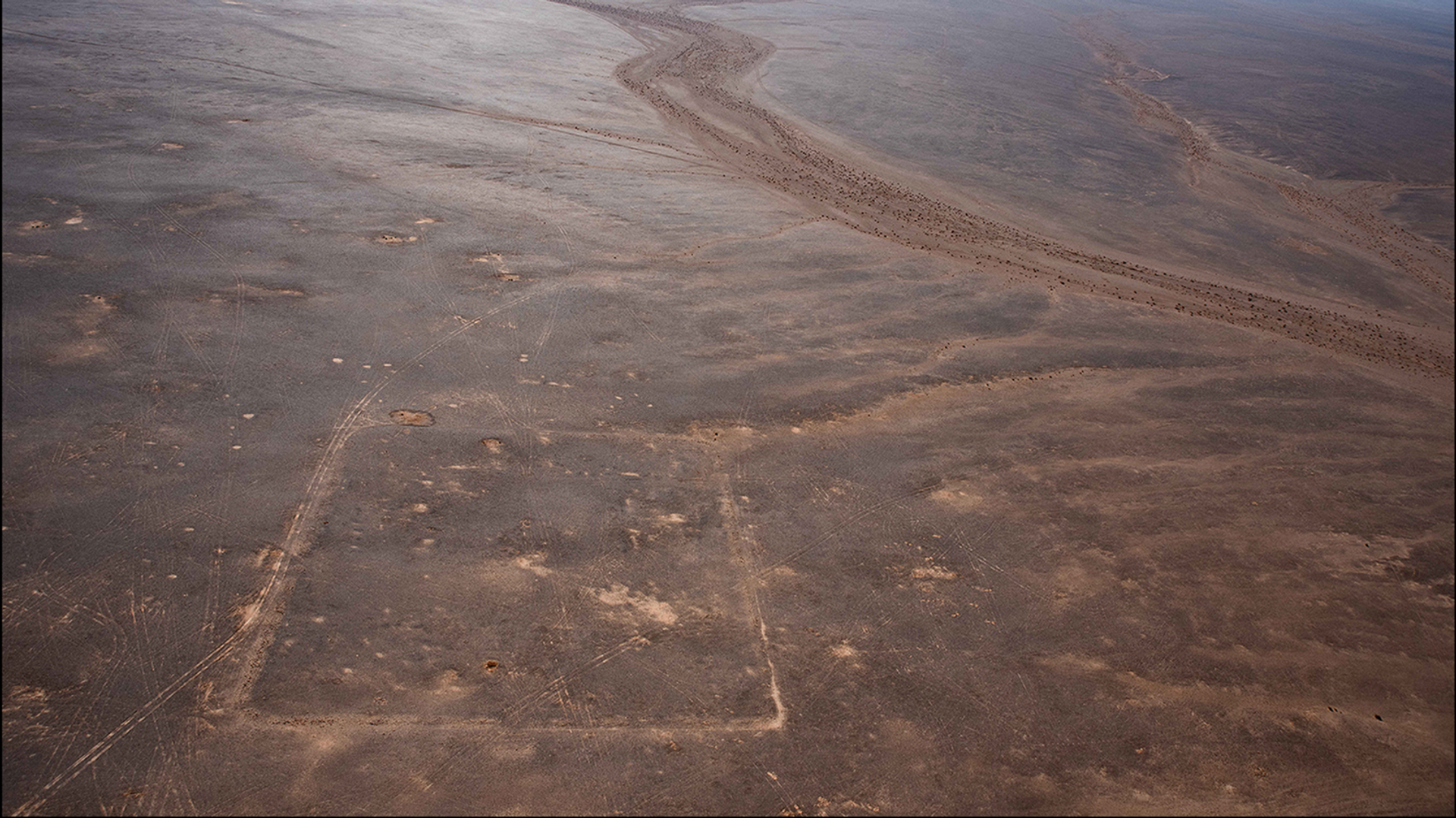https://sputnikglobe.com/20230427/scientists-discover-three-roman-military-camps-in-arabian-desert-1109901661.html
Scientists Discover Three Roman Military Camps in Arabian Desert
Scientists Discover Three Roman Military Camps in Arabian Desert
Sputnik International
Archaeologists in northern Arabia have discovered three Roman fortified camps. It has been suggested that it may be evidence of an "undocumented military campaign" in Saudi Arabia and southeastern Jordan.
2023-04-27T23:52+0000
2023-04-27T23:52+0000
2023-04-28T02:58+0000
beyond politics
science & tech
jordan
saudi arabia
oxford university
roman empire
roman era
history
ancient history
historic sites
https://cdn1.img.sputnikglobe.com/img/07e7/04/1b/1109901834_0:169:1584:1059_1920x0_80_0_0_f29a5a51b62cb6c6498bfbd3f637d701.png
Archaeologists working in the Arabian Desert have discovered three Roman fortified camps, potentially holding evidence of an "undocumented military campaign" that had once been established in the region.Scientists believe the finding links back to the Roman Empire, when Romans advanced through the desert lands as part of a campaign tied to the Roman takeover of the Nabataean kingdom in 106 A.D.The camps found are similar in form but different in size, with the western camp sizing in much larger than the other two camps.Study leader Dr. Michael Fradley believes there is little doubt about the date of these camps.Since the distance between each camp ranges from 37 to 44 kilometers, the team hypothesizes that it was too far for soldiers to walk in a day, and that it was built by a cavalry unit that may have crossed the desert on camels.Experts believe the camps were built as temporary defensive posts. Fradley has stated that their level of preservation is impressive, considering the structures were likely only used for a few days or weeks.Based on the distance between the camps, officials have also speculated that another camp may have been located farther west, at the later Umayyad fort and well station at Bayir.Officials are next looking to confirm the construction date of the sites, as well as determine the reasoning for the size differences in the camps.The research findings were published in the journal Antiquity.
jordan
saudi arabia
Sputnik International
feedback@sputniknews.com
+74956456601
MIA „Rosiya Segodnya“
2023
News
en_EN
Sputnik International
feedback@sputniknews.com
+74956456601
MIA „Rosiya Segodnya“
Sputnik International
feedback@sputniknews.com
+74956456601
MIA „Rosiya Segodnya“
roman empire in middle east, roman military camps, jordan deserts, saudi arabia deserts, roman history
roman empire in middle east, roman military camps, jordan deserts, saudi arabia deserts, roman history
Scientists Discover Three Roman Military Camps in Arabian Desert
23:52 GMT 27.04.2023 (Updated: 02:58 GMT 28.04.2023) Recent traces of three ancient Roman fortified military camps were uncovered through remote sensing conducted by the School of Archaeology at Oxford University, as well as through satellite images.
Archaeologists working in the Arabian Desert have discovered three Roman fortified camps, potentially holding evidence of an "undocumented military campaign" that had once been established in the region.
Scientists believe the finding links back to the Roman Empire, when Romans advanced through the desert lands as part of a campaign tied to the Roman takeover of the Nabataean kingdom in 106 A.D.
The Nabataean Kingdom existed from the 3rd century BC in what is now Jordan, Israel, Syria and Saudi Arabia. It was formed by the Nabataeans, a group of Arab tribes.
In 105 A.D. (according to other sources in 106), the Roman Emperor Trajan annexed Nabatea to the Roman Empire, taking advantage of the discord in the kingdom after the death of its king.
"These marching camps - if we are correct in dating them to the early second century - suggest the Roman annexation of the Nabataean Kingdom following the death of the last king, Rabbel II Soter in AD 106, was not an entirely straightforward affair, and that Rome moved quickly to secure the kingdom," notes the co-author of the article, professor Andrew Wilson.
The camps found are similar in form but different in size, with the western camp sizing in much larger than the other two camps.
Study leader Dr. Michael Fradley believes there is little doubt about the date of these camps.
"We are almost certain they were built by the Roman army, given the typical playing card shape of the enclosures with opposing entrances along each side. The only notable difference between them is that the westernmost camp is significantly larger than the two camps to the east," Dr. Fradley points out.
Since the distance between each camp ranges from 37 to 44 kilometers, the team hypothesizes that it was too far for soldiers to walk in a day, and that it was built by a cavalry unit that may have crossed the desert on camels.
"The camps are a spectacular new find and an important new insight into Roman campaigning in Arabia," archaeologist Mike Bishop, founder and editor of the Journal of Roman Military Equipment Studies, said. "Roman forts and fortresses show how Rome held a province, but temporary camps reveal how they acquired it in the first place."
Experts believe the camps were built as temporary defensive posts. Fradley has stated that their level of preservation is impressive, considering the structures were likely only used for a few days or weeks.
Based on the distance between the camps, officials have also speculated that another camp may have been located farther west, at the later Umayyad fort and well station at Bayir.
Officials are next looking to confirm the construction date of the sites, as well as determine the reasoning for the size differences in the camps.
The research findings were published in the journal
Antiquity.





